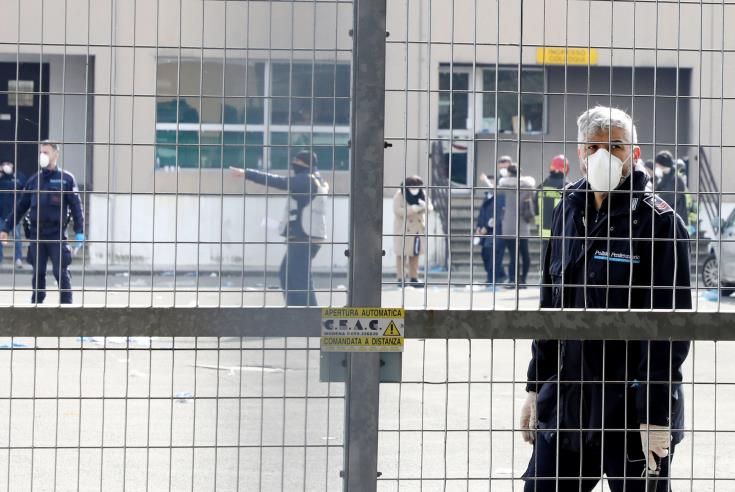In the post-virus transition period, countries will move from saving lives to opening up their economies.
The full extent of economic dislocation and devastation that will follow this crisis is not yet known. What we do know is that thousands of businesses have had to curtail or cease operations.
Factories have stopped producing. Retail stores and restaurants are either closed or devoid of customers. Tourism is at a standstill.
During the previous financial crisis, the EU was called upon to bail out several of its member states, including Cyprus. The current crisis promises to make that one seems small and simple by comparison.
Countries of the European Union exiting the current pandemic will face a situation quite unlike that of the previous financial crisis. The McKinsey consulting group has estimated that in the post-virus period, Europe will see some 55 million unemployed.
National governments will be required to provide support for the many millions already unemployed as well as for many companies struggling to survive.
Financial demands on EU countries are increasing exponentially just as their income from taxation, fees and foreign investment are disappearing.
The financial resources of EU states are already stretched, financial reserves diminishing rapidly. All this against the backdrop of a global recession.
Planning for economic recovery will require unprecedented amounts of financial assistance from the EU central authorities.
It is not just one or two countries requiring aid. Several EU states, possibly a majority, will require assistance, in effect, bailouts. Anticipating this need, the EU has been considering an aid package for member states of some 1 trillion Euros, largely in the form of loans.
Disagreements on Aid
Reaching a decision on the proposed aid has raised disagreements which are testing the cohesion of the group.
President Macron of France has argued that much of this aid should be in the form of outright grants, rather than loans.
Spain would like the aid in the form of a €1.5 trillion recovery fund, financed by the EU, not individual country debt.
Italy is also pushing for aid in the form of shared borrowing, e.g. Eurobonds, underwritten by the EU as a whole. (The US has approved an aid package of 3.5 trillion dollars, lawmakers say trillions more will be needed.)
Even though the 1 trillion-euro aid package mentioned is greater than anything contemplated previously by the EU, it is clear that spread over 27 member states, it will still not be enough. Considerably more aid will be needed.
Some countries most in need are already heavily in debt.
The EU’s Fiscal Stability Pact recommends that the national debt of member states should not exceed 60% of a country’s GDP.
Portugal’s national debt is already at 130% of GDP, much the same as Italy’s. Greece enters the post-crisis period with a debt of approximately 175% of GDP.
The national debts of Spain, Cyprus and France are all in the mid 90% range.
Given the present high level of debt and the uncertainties thrown up by the present crisis, a number of member states would have great difficulty raising additional funds through new bond issues of their own.
The main alternative is some form of credit instrument guaranteed by the EU as a whole, such as the so-called Eurobonds.
This is the method favoured by Spain, Italy and some other member states. This option has been rejected by Germany and the Netherlands, neither of which wants to run the risk of finding themselves liable for the borrowings of others.
This is the root of a disagreement which threatens the cohesion of the group.
Aid and Austerity
Italy is an example of an EU member state already in financial difficulty.
Even before the virus hit, its economy was registering a negative growth rate (the first quarter of 2020) of -5%. Its national debt is already more than twice the level stipulated by the EU Fiscal Stability Pact.
Politically, the country has long been Eurosceptic, at one point appearing to seriously contemplate an exit from the bloc.
Italy’s demands from the EU for additional post-crisis assistance will be difficult to ignore.
The EU’s previous recipe for member states in this situation is the one Cypriots are familiar with – loans coupled with austerity programmes to ensure repayment.
After the hardship imposed by the virus epidemic, Italy and other EU members will not be in any position, economically or politically, to agree to additional austerity.
Also, the experience of Greece and Cyprus during the previous financial crisis will not have escaped their attention.
But there is strong opposition by the more financially conservative EU members against aid in the form of shared responsibility with borrowers.
Such conflicts over aid are not new. Cyprus only agreed to the EU conditions for aid when, as the nation’s president put it, he “had a gun to his head”.
But Italy is not a small island country on the edge of Europe which the EU can afford to confront with a “take or leave it” attitude.
The same may be said of other member states which are in similar financial difficulties.
There is a saying that the prospect of hanging concentrates the mind.
The possible breakup of the EU over these post-pandemic issues will certainly initiate a rethinking and review of more traditional EU policies on aid.
EU authorities will find it difficult to follow the old EU formula of “lending with austerity attached”.
Transition from the virus epidemic will call for compromise, flexibility and financial innovation. Central banks, including the European Central Bank, will explore new forms of credit and credit instruments.
Government debt on both sides of the Atlantic will reach heights previously considered unsustainable.
Multiple bailouts of EU member states will be required; however, they might be called.










